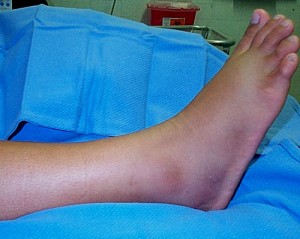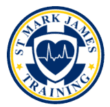One of the most common bone injuries includes ankle fractures. The severity of the fracture to seek medical care can be determined by the degree of pain and discomfort while walking, your inability to walk or if you suspect that a bone might be broken. The details posted on this blog are for information purposes only. Learn to recognize, manage and help victims with broken bones and fractures by enrolling in St Mark James first aid and CPR training.
Causes
When the ankle is stressed over its limit that it does not have the strength to bear any weight or pressure, an ankle injury may be the reason. Ankle fractures may be caused when a bone breaks and/or when the ligaments tear. 
- Rolling or twisting your ankle
- Extending or flexing the joint too much
- Jumping from a high altitude
Symptoms
Some of the common signs and symptoms of ankle fractures include:
- Pain—sometimes you may not feel pain in the exact location of the fracture
- Swelling around the ankle
- Bruising—hemarthrosis—black or blue discoloration of the affected region
- Bone deformity around the ankle—the bone may be exposed
- Pale skin
- Numbness
- Inability to move the affected foot
Treatment
If you suspect that you may have fractured your foot, call emergency medical help. In the meantime, follow these steps:
1. Do NOT try to push back the protruding bone to its place. Simply cover the affected region with a sterile bandage or clean cloth
2. Stop the bleeding. Do this by applying direct pressure on the wounds with a clean cloth for about 15 minutes. Elevate the affected region, if possible and replace the cloth if the blood absorbs though
3. Control the swelling with RICE:
- Rest the ankle
- Ice the affected region
- Compress the affected region by wrapping it with an elastic bandage
- Elevate the affected ankle above heart level
4. Control pain and inflammation. Take over-the-counter pain medicine such as aspirin or ibuprofen. Avoid giving aspirin to young children and teenagers under 18 years of age
5. If help has not arrived yet, ask a family member or friend to take you to the hospital immediately
Learn More
To learn more about bone, joint and ligament injuries and how to provide first aid for them enrol in St Mark James first aid and CPR training (more information).
